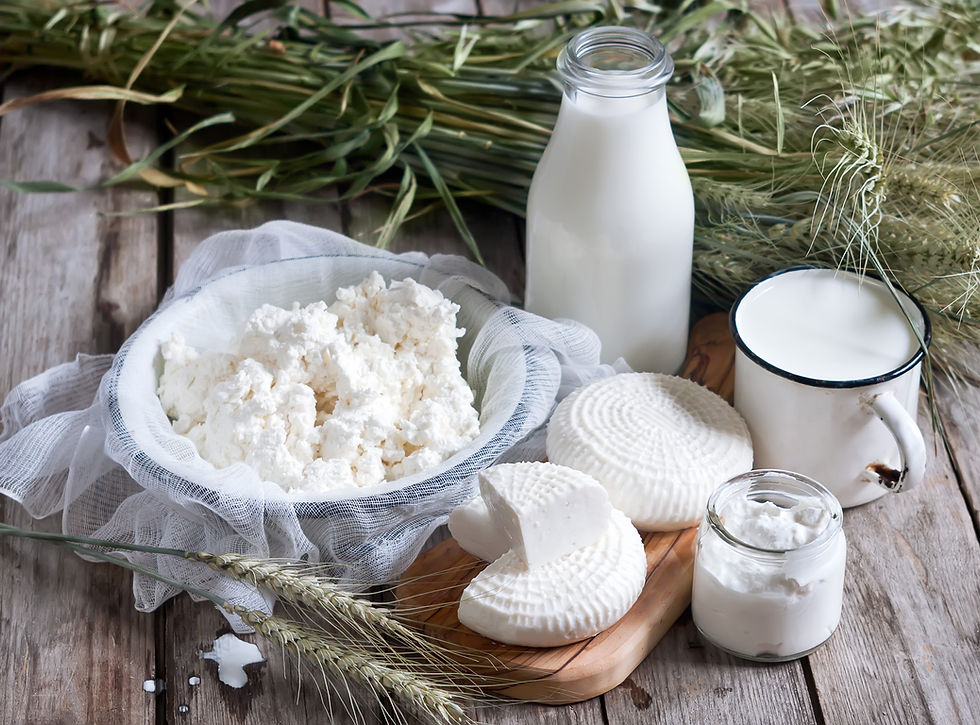Histamine Liberators: Should we Avoid Them?
- Catherine & Rosie

- Jun 17
- 3 min read
Updated: Jul 29
If you're familiar with the space of histamine intolerance, you have likely heard the term "histamine liberators." This topic has gained traction among those dealing with various symptoms related to histamine intolerance (HIT).
When you search online for a low-histamine diet, you'll often find lists separating histamine-containing foods from histamine liberators. But what are they, and why should you care?
Understanding Histamine Liberators
Histamine liberators are substances primarily found in specific foods. They are believed to encourage the release of histamine from mast cells in the body. Histamine is a chemical that plays a vital role in immune responses and is significant in allergic reactions - learn more here.
Histamine liberators can worsen symptoms similar to those of histamine intolerance (HIT). These symptoms may include headaches, skin rashes, and digestive problems.
Even if a food item is low in histamine itself, consuming histamine liberators can still trigger the body to release more histamine. This reaction could lead to discomfort for individuals with HIT.
How Do Histamine Liberators Work?
The mechanism behind histamine liberators usually involves specific compounds in food and the cells that store histamine. Certain foods are believed to contain biogenic amines or additives. These substances may stimulate an excessive release of histamine.
When people consume histamine-rich foods, these items might directly signal mast cells to release more histamine than the body can effectively process. This excess release can lead to the uncomfortable symptoms associated with histamine intolerance.
Common Histamine Liberators
Many foods are classified as histamine liberators. A quick internet search reveals the most commonly found foods, including:
Fruits: Citrus fruits, pineapple, strawberries, kiwi, bananas, and plums.
Nuts: Walnuts and peanuts.
Chocolate and Cocoa
Tomatoes
Vinegars
Food Additives: Benzoates, sulfites, nitrites, glutamate, and food dyes.
Legumes: Beans, soy, and lentils.
Why Are There Different Opinions on Histamine Liberators?
There is a range of opinions among health professionals and researchers about whether histamine intolerance truly exists. Consequently, the concept of histamine liberators becomes even more contentious.
Some individuals strongly believe in their effect and advise those with sensitivity to avoid specific foods strictly. Conversely, many question the validity of distinguishing between histamine liberators and non-liberators, arguing that more research is necessary.
Factors to Consider
Several factors are worth considering in this debate:
Limited Research: Most studies on histamine intolerance have concentrated on histamine itself rather than on histamine liberators.
Individual Tolerance: Reactions to histamine can vary greatly among people. This variability leads to different dietary recommendations based on personal experiences rather than empirical evidence. A person's individual tolerance to histamine and some vasoactive amines is thought to vary due to multiple factors. One factor is the efficiency of their DAO enzymes. See more on DAO here.
Misinterpretation of Data: Many foods higher in vasoactive amines also contain histamine. This overlap may blur the distinction between histamine and histamine liberators, creating confusion in scientific studies.
Balancing Risks and Benefits: Even if histamine liberators exist, they likely have a less profound impact than high-histamine foods. Overly restrictive diets can pose higher risks, such as a less diverse microbiome, malnutrition, and poor food relationships. Such consequences are crucial for Dietitians to avoid!
Our Perspective on Histamine Liberators
Histamine liberators provoke intriguing questions for those with histamine intolerance. However, the current evidence does not sufficiently validate their existence as distinct entities.
Nonetheless, vasoactive amines are an interesting consideration worth exploring for those leading a low-histamine lifestyle.
As ongoing research adds clarity to the complexities of histamine regulation and individual sensitivities, we highly recommend that anyone concerned about their dietary choices consult with their healthcare professional for personalized advice.
Consult an Expert
Known as the Histamine Expert Dietitians, Rosie and Catherine are registered Dietitians who assist clients in overcoming the symptoms of histamine intolerance and DAO deficiency through their signature *Histamine Rebalance Programme




コメント